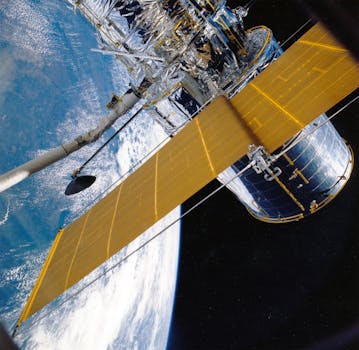
GEO Satellites: Understanding the Technology and Applications
GEO satellites, or Geostationary Orbit satellites, are a type of satellite that orbits the Earth at an altitude of approximately 36,000 kilometers, remaining stationary relative to a fixed point on the planet. This unique characteristic allows GEO satellites to provide continuous coverage of a specific region, making them ideal for a variety of applications, including telecommunications, weather forecasting, and Earth observation. GEO satellites have been a cornerstone of modern telecommunications, enabling global connectivity and facilitating the transmission of data, voice, and video signals.
The technology behind GEO satellites is complex and fascinating. These satellites are equipped with advanced transponders, which receive and retransmit signals to and from Earth. The signals are transmitted through large antennas, which are designed to maximize the signal strength and minimize interference. GEO satellites are typically powered by solar panels, which provide the necessary energy to operate the satellite’s systems. The satellites are also equipped with propulsion systems, which allow them to maintain their orbital position and make adjustments as needed.
Applications of GEO Satellites
GEO satellites have a wide range of applications, including telecommunications, broadcasting, weather forecasting, and Earth observation. In the telecommunications sector, GEO satellites are used to provide internet connectivity, mobile phone coverage, and voice and data services to remote and underserved areas. They are also used to support disaster relief efforts, providing critical communication services in areas where traditional infrastructure has been damaged or destroyed.
In the broadcasting sector, GEO satellites are used to transmit television channels and radio stations to a global audience. They are also used to provide live coverage of events, such as sports and news, to a global audience. In the weather forecasting sector, GEO satellites are used to monitor weather patterns and provide early warnings of severe weather events. They are also used to study the Earth’s climate and monitor environmental changes.
Advantages and Challenges of GEO Satellites
GEO satellites have several advantages, including global coverage, high capacity, and reliability. They are also relatively low maintenance, as they can operate for many years with minimal intervention. However, GEO satellites also have some challenges, including high launch costs, limited bandwidth, and signal latency. Additionally, GEO satellites are vulnerable to interference from other satellites and terrestrial systems, which can impact their performance and reliability.
Despite these challenges, GEO satellites continue to play a vital role in modern telecommunications. They provide a critical link between different regions and countries, enabling global connectivity and facilitating the exchange of information and ideas. As technology continues to evolve, we can expect to see new and innovative applications of GEO satellites, including the use of advanced propulsion systems and the development of new satellite constellations.
Future of GEO Satellites
The future of GEO satellites is exciting and rapidly evolving. With the development of new technologies, such as high-throughput satellites and advanced propulsion systems, we can expect to see significant improvements in the performance and capacity of GEO satellites. Additionally, the launch of new satellite constellations, such as the OneWeb and Starlink constellations, will provide new opportunities for global connectivity and enable a wide range of new applications.
However, the future of GEO satellites also presents several challenges, including the need for sustainable and responsible management of the geostationary orbit. As the number of satellites in orbit increases, there is a growing risk of collisions and interference, which can impact the performance and reliability of GEO satellites. To address these challenges, it is essential to develop and implement effective regulations and standards for the management of the geostationary orbit.




